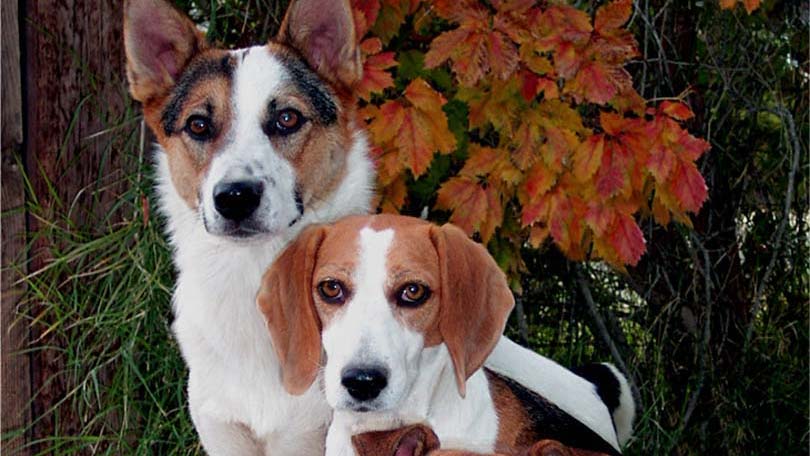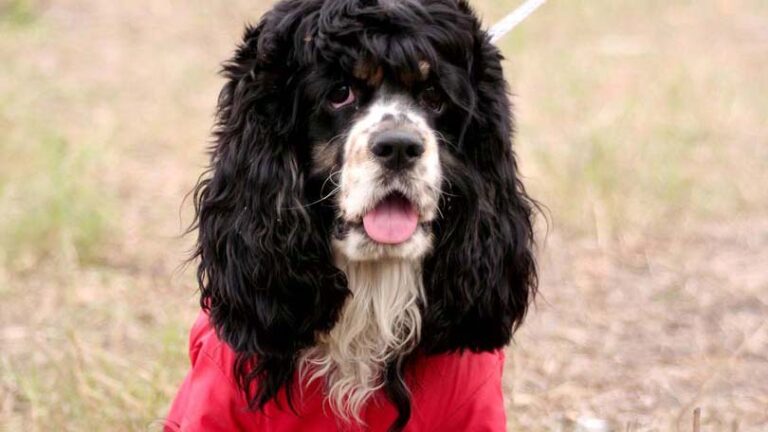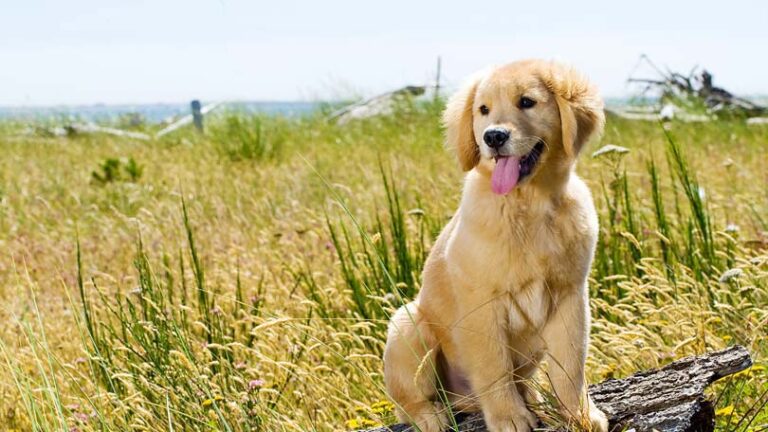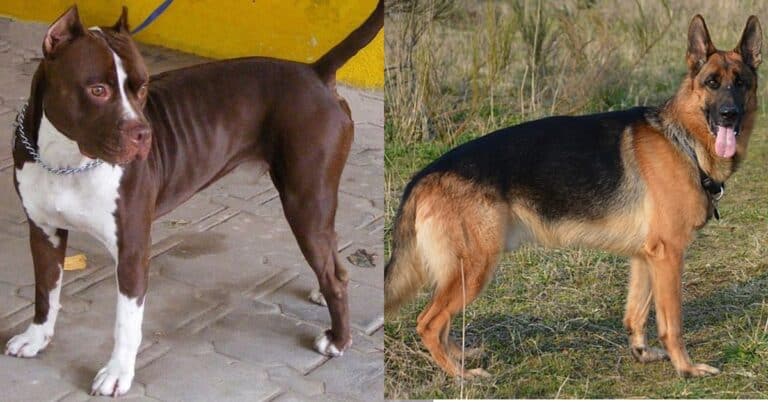Training a Dog
Part of owning a dog is training it to be a well-mannered and socially acceptable member of both the two-legged and four-legged society. An untrained dog is a nightmare to live with and even a danger to visitors, family, or itself. Dogs learn or adapt to living with their people by osmosis. By watching how we interact with each other, by reading body language, and by the occasional reprimand, they learn what it is we want them to do. However, this is the slow and painful way of training your dog. Taking a proactive and positive approach is a far faster and far more rewarding way to train a dog.
Basic Dog Training
Basic dog training begins even before you bring your new puppy home. Pups are trained by their mother to understand and accept discipline , by its littermates and by the breeder. Breeders often start with the ‘ sit ’ command when the pups are six or seven weeks old as it makes it easier to feed the hungry pack. They will start teaching recall as well – how else are they going to call a litter of pups to them when they are outside having fun?
Basic dog training and obedience starts very early yet many new owners do not continue the process when they bring their new puppy home. Many feel they want the pup to just be a puppy as long as possible or that their new pup is not old enough to learn or understand. Guaranteed – a pup that is ready to leave his littermates is old enough to start with basic obedience!
Whenever he sits, say ‘good sit’ in a happy voice. When he lies down, say ‘good down’. When he stands up, say ‘good stand’. When he waits to go through a door or to start eating, say ‘good wait’. When he comes to you, say ‘good come’. He will learn the words and understand the praise.
The next step is puppy kindergarten – one of the most fun and entertaining classes you will ever take! Puppy class is more about socialization , basic manners and learning how to be a good puppy parent then it is about the hard and fast rules of obedience class. Half the class is about play sessions between the classmates as well as passing the pups amongst the humans so that the puppies learn that being handled and trained by other people is not a bad thing.
After puppy kindergarten comes basic obedience class. Basic obedience is about training a dog with the foundational commands – ‘sit’, ‘stay’, ‘come’, ‘down’, and ‘heel’. Because the students are still young, part of the class is play session and part of the class is actual ‘work’.
All dogs should attend both puppy kindergarten and basic obedience no matter what the size of the dog, the breed of the dog or the experience of the owner. The socialization aspect alone is critical to the dog’s ability to interact with other dogs and other people throughout its life.
Advanced Dog Training
Advanced dog training delves into new commands and ‘proofing’ the commands your dog already has under their belt. Depending on how well you want you your dog trained depends on whether the two of you move on to this level. Although it is strongly recommended to continue his training, it is not critical to having a socialized, obedient and well-mannered dog.
Obedience Training vs. Manners
Obedience and manners are two different things when it comes to training your dog but the approach is similar. Obedience training includes your basics – ‘sit’, ‘down’, ‘stay’ and ‘heel’ being the most common. ‘Manners’ training is more about training your dog to live in our human based world without being a nuisance or constant headache. Canine good manners include not to jump up on people or the furniture, to not steal food off the counter or table, to sit when strangers approach, and to not bark at the mailman every single day.
Thankfully, obedience classes teach both types of training and often a strong foundation in obedience training makes learning manners far easier. An example would be training your dog to have an infallible ‘sit/stay’ so teaching him to sit when strangers approach is easier because he has the foundational training in place. However, many dogs have good manners but have little to no obedience training. Do not make this mistake as manners may make him easier to live with, but he still pulls you off your feet every night on your walk.
Positive vs. Negative Dog Training
How we train our dogs evolves with each new fad or hot training technique. For hundreds of years, a combination of positive training in the form of bribery and negative training techniques was the norm. When you consider how well these dogs performed for their owners, maybe it was not such a bad way to train.
Then a few decades ago, everyone decided that bribing dogs with food was not the answer as the dog learned only to perform when there was food available. If you took away the food, you took away the incentive for the dog to work for you. All that was left was the negative training techniques – people said ‘no’ a lot.
In the last few years, dog trainers have realized that going back to the combination of positive and negative training techniques is ideal and that bribery was not the problem originally believed. Positive training techniques have evolved from only bribery to praising the dog when it does something correctly and beyond to where the dog actually enjoys their training sessions and a strong bond develops between handler and their charge.
What is negative training? As a child, if your teacher only ever said to you ‘no, don’t do it that way’ and never told you the correct way to do something, whatever that something is, how well would have you learned your lessons? And, if you did it wrong a second time your teacher smacked your hand, how well would you have then learned your lessons? Maybe you would learn faster but this trial and error teaching pattern would make you hesitate to do anything in case it was wrong and resulting in a smack.
That is what negative dog training techniques do for our dogs. By saying ‘no!’ and giving a correction through their leash, you are effectively telling them what they are not to do. But what about showing them what you want them to do or telling them they are a ‘good dog’ when they do something right? Positive dog training techniques involve rewarding good behavior with a ton of praise, pets, and food to a limited degree.
Clicker Training your Dog
Remember Pavlov with his bell and the drooling dogs? Clicker training uses the same principle, called ‘operant conditioning’, of marking the desirable behavior with a ‘click’ and then rewarding it with a treat or a ‘good dog’. A ‘clicker’ is a handheld device that makes a distinct noise when pressed – a ‘click’.
When the dog (or cat, horse, ferret or any animal mentally capable of learning and responding to commands ) does a desirable or favorable behavior, the handler ‘clicks’ the clicker at that exact same moment while giving a food reward. This positive and humane training technique has swept much of the dog-training world. It is easy to learn how to do and dogs eagerly respond to it, quickly learning the meaning of the ‘click’ and the reward.
To start, buy a clicker at your local pet store and either visit the website for articles and videos explaining how to use a clicker when training your dog or find a ‘clicker trainer’ in your area.
Consistency when Training a Dog
Probably the most important aspect to training a dog is consistency. Dogs thrive on a routine and although most dogs can adapt to any situation, inconsistent training techniques will slow any progress they make. When training your dog, whether it be house training, obedience training or manners training, be consistent and patient.
An obedient and well-mannered dog is a wonderful addition to any family. They are your best friend and are able to go almost everywhere you go as long as dogs are allowed. They are also an ambassador for their breed, something rarely considered by owners. Learn to train your dog the right way and always put your dog’s best foot forwards!

Having discovered a fondness for insects while pursuing her degree in Biology, Randi Jones was quite bugged to know that people usually dismissed these little creatures as “creepy-crawlies”.







